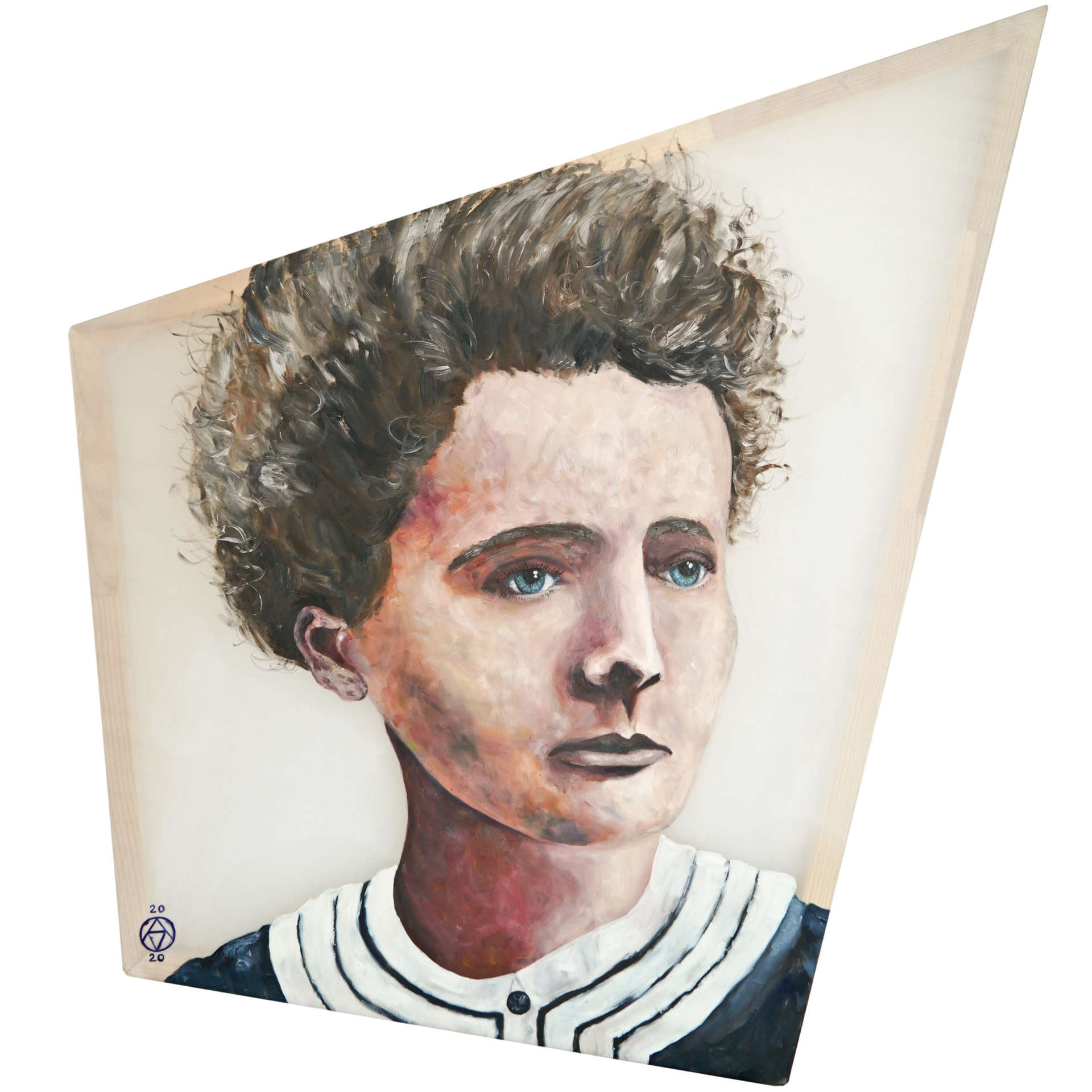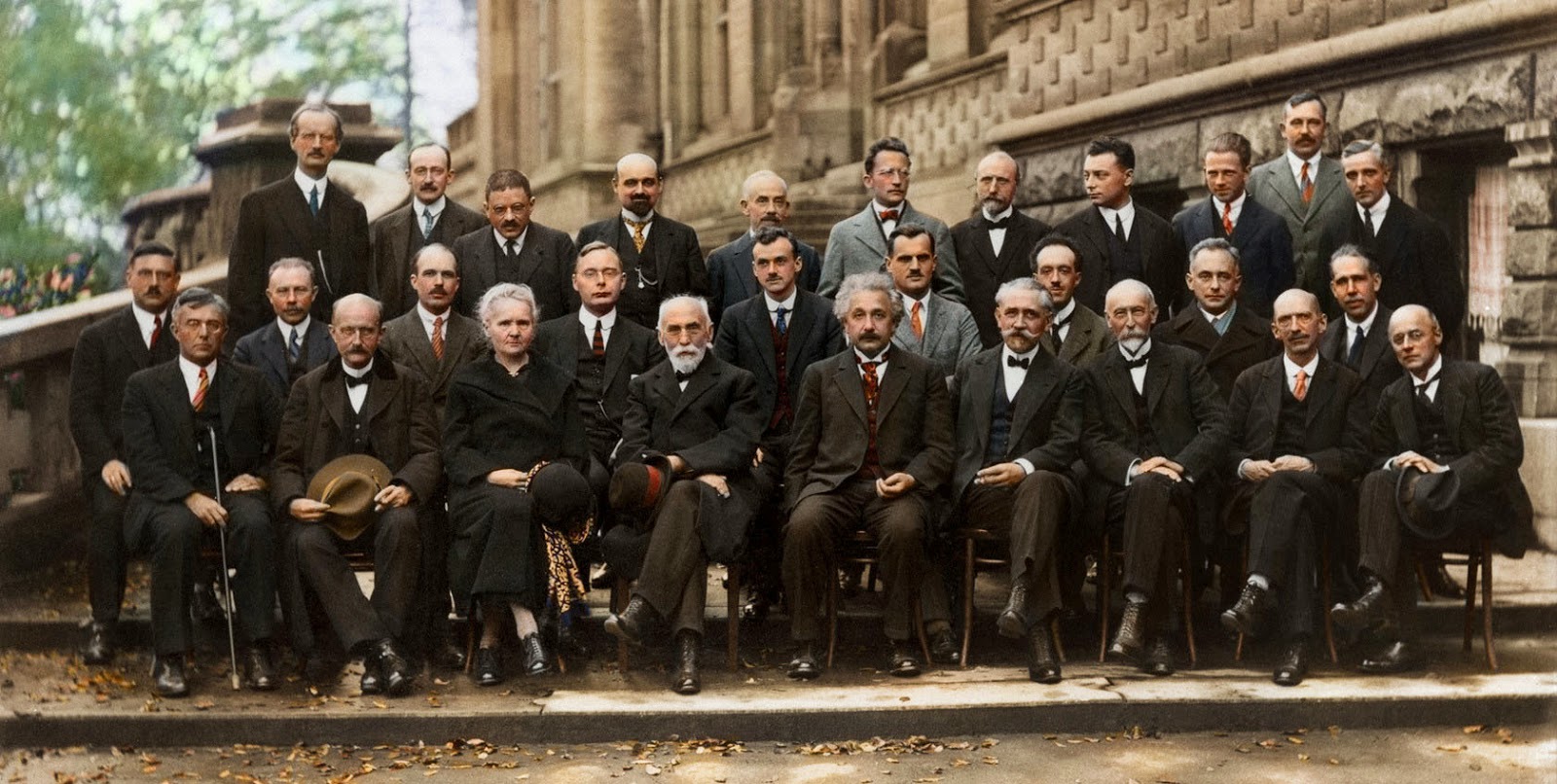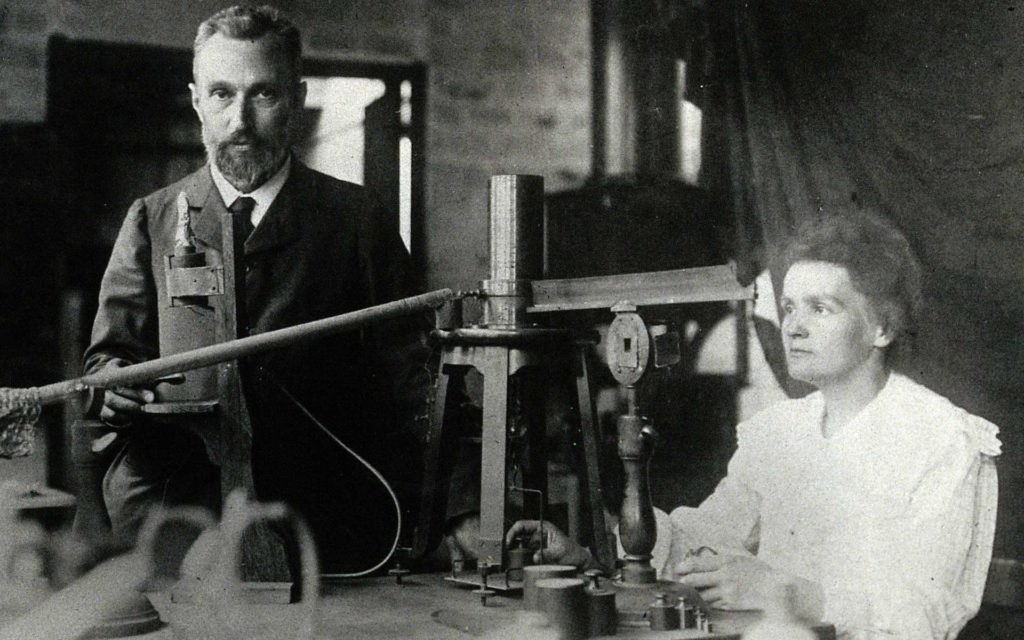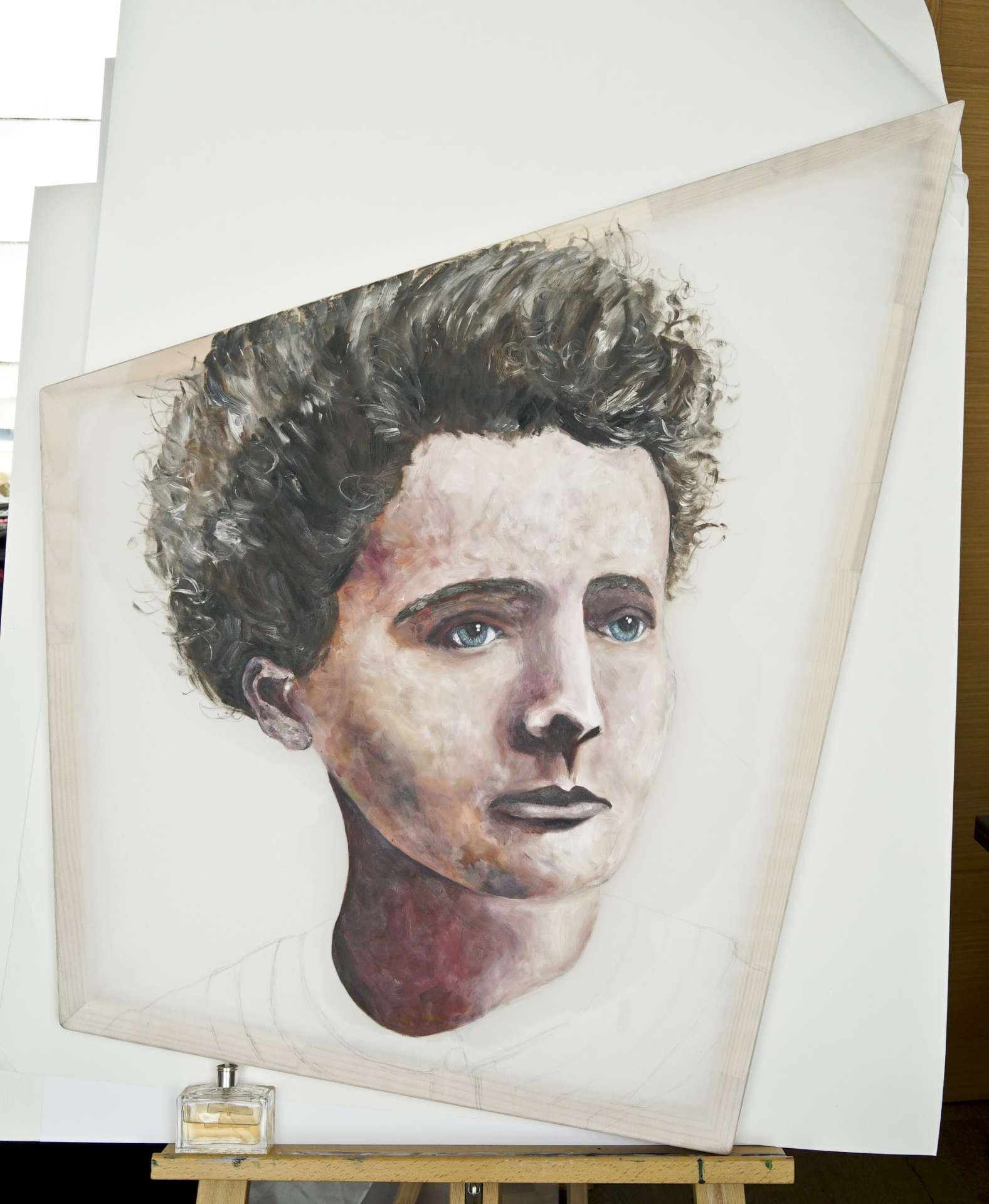
1867-1934
Marie Curie
When we think of ‘radioactivity’, we think of dangerous chemicals and nuclear meltdowns, or of X-rays and related advances in medical treatment, or commercial flights that expose us to it. We are aware of its huge impact on our lives
In this painting, the focus is on the remarkable woman who coined the term itself and secured two Nobel prizes in two distinct sciences (the only person ever to have done so): Marie Curie. Together with her husband she discovered Polonium and Radium, then she isolated Radium. She devoted her life to science, establishing the Radium Institute and finding ways to apply Radium in medicine

A. Piccard, E. Henriot, P. Ehrenfest, E. Herzen, Th. de Donder, E. Schrödinger, J. E. Verschaffelt, W. Pauli, W. Heisenberg, R. H. Fowler, L. Brillouin;
P. Debye, M. Knudsen, W.L. Bragg, H. A. Kramers, P. A. M. Dirac, A. H. Compton, L. de Broglie, M. Born, N. Bohr;
I. Langmuir, M. Planck, M. Curie, H.A . Lorentz, A. Einstein, P. Langevin, Ch.-E. Guye, C. T. R. Wilson, O. W. Richardson
Early Life and Education
Curie was born as ‘Maria Sklodowska’ in Warsaw, 1867. Right from the start, she faced two daunting obstacles in her dream to study science and medicine at University. Firstly, her family was too poor to afford sending her to university (along with her sister, Broyna). Secondly, universities in Poland were not accepting women – meaning that they would need to study abroad, which would be even more expensive.
Her solution was to work as a tutor and governess for children, to earn enough to send first Bronya to study in Paris and later herself. She worked long days and used her occasional free evenings to read science textbooks. Finally, aged 24, she had earned enough to send herself to the Sorbonne, Paris’ prestigious university, to study chemistry, maths and physics.
Straight away she faced further obstacles – the courses were taught entirely in French, forcing Curie to learn the language quickly! And when she moved out of the home she had been sharing with Bronya and her husband, to live in the <Quartier Latin> much closer to the university campus, she endured icy winters in her new unheated apartment
All her endurance paid off as she finished top in her Physics Masters course in 1893 (aged 26) and completed a Chemistry Masters the following year. She had also secured industry funding to explore the link between the magnetic strength of steel and its density, a potentially very lucrative area of study.
Science and work
Despite her yearning to return to Poland (which, at the time, didn’t allow women to hold university positions), she studied for her phD in Paris, where she also met and married Pierre Curie, already an established professor. The two went on to make a formidable research team and she later shared the 1903 Nobel Prize in Physics with him and Henri Becquerel.
The latter had discovered that rays emitted from uranium could pass through metal – but Becquerel’s rays were not X-rays. Marie investigated the rays of uranium and she made many discoveries:
– Using an electrometer Pierre and his brother invented, she detected that the air that uranium rays pass through is electrically charged;
– The number of rays coming from uranium doesn’t depend on its chemical form but on the amount of uranium present. Her theory correctly stated that the rays came from within the uranium atoms rather than a chemical reaction;
– Two minerals of uranium, pitchblende and robernite, have a higher effect on the conductivity of air than pure uranium. She deducted that these minerals must contain another element that is more active than uranium. So in 1898 Curie discovered thorium, although Gerhard Carl Schmidt in Germany discovered it a few weeks before her – unbeknownst to her.
“Not only did she do outstanding work in her lifetime, and not only did she help humanity greatly by her work, but she invested all her work with the highest moral quality. All of this she accomplished with great strength, objectivity, and judgment. It is very rare to find all of these qualities in one individual”
Albert Einstein
POLONIUM & RADIUM
The Discoveries, Radium & Polonium
In 1898, Pierre joined her research and they started to collaborate. By the end of 1898, they had discovered not one but two new elements – including polonium, 300 times more radioactive than uranium, with whose name they paid homage to Marie’s homeland. The other, radium, was found to be far more radioactive still (it will always be hotter than its surroundings) and was named after the Latin term for ‘ray’. The Curies also dubbed the phenomenon of ray-emission they observed from these types of elements as ‘radioactivity’, thus coining the term.
It’s worth noting that the Curies were operating in a substandard laboratory until 1906, when the University of Paris finally agreed to fund a new one. Pierre died in a road accident, crushed by a horse-drawn carriage, in April that year and the University’s Physics department offered the professorship created for him to Marie instead, thus making her the first ever female professor at the University of Paris
In 1910, for the first time, Marie isolated a pure sample of the metallic element radium, which she had discovered 12 years prior.
Marie Curie was awarded the Nobel Prize in Chemistry in 1911 for “discovery of the elements radium and polonium, the isolation of radium and the study of the nature and compounds of this remarkable element.” Thus, she became the only person ever to receive two Nobel Prizes in two Sciences and the only woman ever to win two Nobel Prizes in any category.
Legacy & Death
In 1934, her hazardous work finally caught up with her and she died in a Paris Sanitorium from aplastic anaemia – a condition where the body fails to produce enough blood cells – thought to have been caused by long-term radiation exposure. Her body was moved to the Pantheon in Paris in 1995, making Curie the first woman to be entombed there on her own merits. She was succeeded by her daughters Eve, a writer and a journalist, and Irene, who together with her husband received the Nobel Prize in Chemistry just after Marie Curie’s death.
Marie Curie’s books and personal papers are still so radioactive that they are stored in lead boxes and can only be handled wearing protective suits. The institute, scholarships and charities in her name still power and inspire research worldwide.

Pierre and Marie Curie

